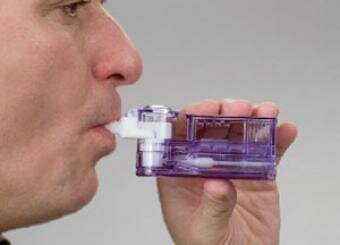Sunday, February 1, 2015
Sunday, October 26, 2014
Friday, October 17, 2014
FMR1 Gene - FRAGILE X
courtesy: http://www.fragilex.org/fragile-x-associated-disorders/genetics-and-inheritance/fmr1-gene/
The Fragile X (FMR1) Gene

The Fragile X (FMR1) Gene
Why Is It Called the FMR1 Gene?
Genes are named when they are discovered. Often the name isn’t exactly the same as the condition, in case it is later discovered that there is more than one gene involved in the condition. The gene that causes Fragile X is called the “FMR1 gene,” which stands for fragile X mental retardation gene. Though the term “mental retardation” has given way in recent years to the more generally accepted term of “intellectual disabilities,” the scientific name of the gene can’t change with the times.
- See more at: http://www.fragilex.org/fragile-x-associated-disorders/genetics-and-inheritance/fmr1-gene/#sthash.JmmUaZEd.dpuf
Thursday, October 16, 2014
Glucotoxicity and Lipotoxicity: Reasons for Use of Insulin in Type 2 Patients
Glucotoxicity and Lipotoxicity: Reasons for Use of Insulin in Type 2 Patients
Click to read above
If you are very interested watch the video below
http://www.diabetesincontrol.com/articles/videos/16084-philipp-scherer-phd-how-does-lipotoxicity-relate-to-type-2-diabetes
Click to read above
If you are very interested watch the video below
http://www.diabetesincontrol.com/articles/videos/16084-philipp-scherer-phd-how-does-lipotoxicity-relate-to-type-2-diabetes
Monday, September 29, 2014
The National Lipid Association Issues New Recommendations for Patient-Centered Management of Cholesterol
The NLA expert panel’s consensus emphasizes that non-HDL-C is a better primary target for modification than LDL-C, and is now considered as a co-target with LDL-C.
The main conclusions of the NLA panel include:
1. An elevated level of cholesterol carried by circulating apolipoprotein (apo) B-containing lipoproteins (non–HDL-C and LDL-C, termed atherogenic cholesterol) is a root cause of atherosclerosis, the key underlying process contributing to most clinical arteriosclerotic cardiovascular disease (ASCVD) events.
2. Reducing elevated levels of these atherogenic cholesterol particles will lower ASCVD risk in proportion to the extent that atherogenic cholesterol is reduced. This benefit is presumed to be a result from atherogenic cholesterol lowering through multiple modalities, including lifestyle and drug therapies.
3. The intensity of risk-reduction therapy should generally be adjusted to the patient’s absolute risk for an ASCVD event.
4. Atherosclerosis is a process that often begins early in life and progresses for decades before resulting in a clinical ASCVD event. Therefore, both intermediate-term and long-term/lifetime risk should be considered when assessing the potential benefits and hazards of risk-reduction therapies.
5. For patients in whom lipid-lowering drug therapy is indicated, statin treatment is the primary modality for reducing ASCVD risk.
6. Non-lipid ASCVD risk factors should also be managed appropriately, particularly high blood pressure, cigarette smoking and diabetes mellitus.
Many approaches that safely lower blood cholesterol—including improved dietary and exercise habits and several medications—have been shown to reduce cardiovascular risk in higher-risk individuals. While statin medications in specific doses have the most supportive evidence, clinical judgment should be used to determine the best approach for each patient. Also, the panel recommends that consideration be given to use of combination therapy to statins with lipid-altering agents that further lower non-HDL-C and LDL-C to achieve goal levels of atherogenic cholesterol in high risk patients.

Thursday, September 18, 2014
How to predict height of a child?
Height Predictor Resources:
How tall will I be? That might be a question kids have when they get older.
More often though, parents wonder how tall their toddler or preschooler might be when they grow up.
It's a natural question for parents and kids, and besides being a little fun to try and predict how tall a child might be, it can also help to make sure a child is growing normally.
- Kids Height Calculator - Use the Two Years Times Two Method, with simple linear regressions, to doubles a child's height at age two years to predict how tall they will be when they grow up.
- Growth Charts - One easy way to see how tall your child will be is to simply plot his growth on a growth chart and see where he ends up. Does your child's growth curve lead him to 6'2" or 5'2" or somewhere in between?
- Short Children - Review red flags to look for to help you tell if a child is growing normally and will reach his predicted height or if he might have a growth problem.
- Normal Growth for Young Children - Regular measurements of a child's height, weight and head circumference and plotting them on a growth chart are a good way to see if your child is growing normally. Review general guidelines for a younger child's growth rates.
- Ideal Body Weight Calculator - Is your child overweight, underweight, or just right?
Resource: http://pediatrics.about.com/cs/usefultools/l/bl_height_pred.htm
Sunday, September 14, 2014
Is Coffee increasing risk for diabetes
A study done in San Antonio Hospital at the University of Padova, Italy, found that coffee may be associated with the risk of prediabetes in young adults with hypertension. Patients who more slowly metabolize caffeine have an even greater risk of hypertension.
The study included 1,180 patients from age of 18 to 45 years with stage 1 hypertension but not diabetes. Genotyping of the enzyme that metabolizes caffeine, CYP1A2, was done in 639 patients. Analysis showed 42% of participants were fast metabolizers of caffeine and 58% were slow metabolizers.
After 6.1 years, 24% of patients were diagnosed with diabetes. Moderate coffee drinkers had a 34% increased risk of developing prediabetes compared with abstainers. Heavy drinkers had twice the risk of developing prediabetes compared with abstainers. However, the increased risk of prediabetes linked with coffee intake was only noticed in slow caffeine metabolizers, with a hazard ratio of 2.78 (P=0.0076) in heavy drinkers. The risk of prediabetes was not increased significantly among the fast caffeine metabolizers.
The outcomes of the HARVEST study propose that in young adults with hypertension, caffeinated coffee should be considered a dietary risk factor for prediabetes. Increased risk applies especially to slow caffeine metabolizers and to patients who are overweight or obese due to additional risk factors. The findings contradict previous epidemiologic studies that have advocated coffee consumption as a means to lower the risk of type 2 diabetes mellitus.
Practice Pearls:
- Coffee can increase the risk of prediabetes in young adults with hypertension.
- Increased risk applies especially to slow caffeine metabolizers.
- People who drank more than three cups of coffee per day doubled their risk of prediabetes.
European Society of Cardiology. "Coffee increases prediabetes risk in susceptible young adults September 2014. www.sciencedaily.com/releases/2014/09/140902093427.htm

Thursday, September 11, 2014
Slide show: Back exercises in 15 minutes a day
Source: http://www.mayoclinic.org/healthy-living/adult-health/multimedia/back-pain/sls-20076265
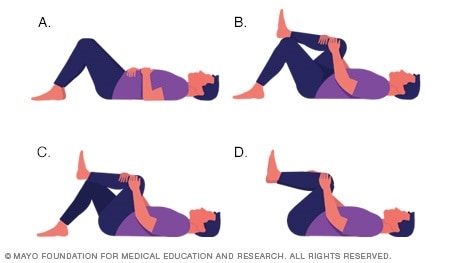
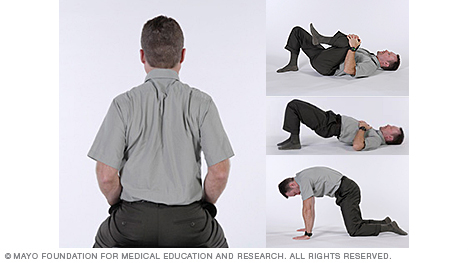
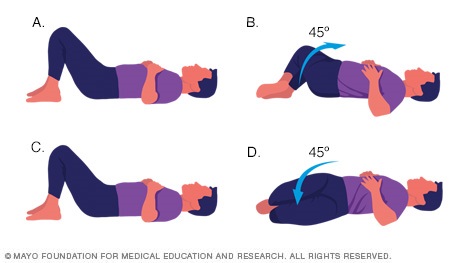
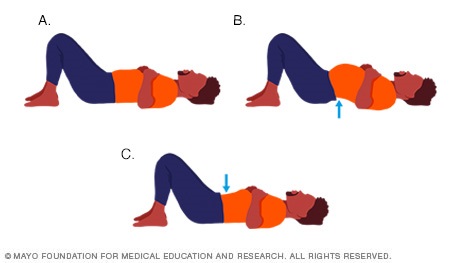
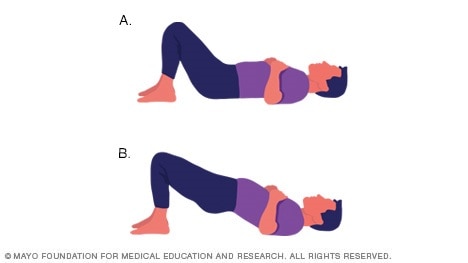
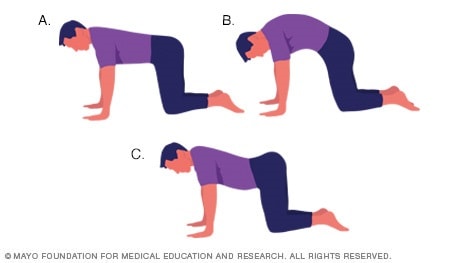
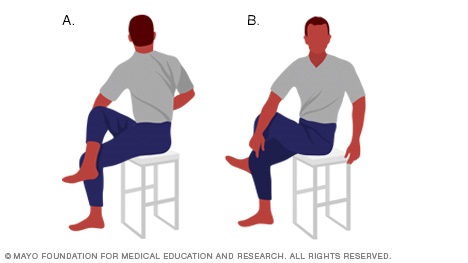
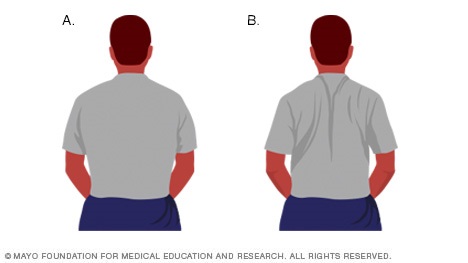








Labels:
Back exercise,
Mayo clinic,
prakasam,
SackidMD
Wednesday, September 10, 2014
Diabetes College Scholarships -
Diabetes College Scholarships -

Scholarships

Diabetes Scholars Foundation:
The Diabetes Scholars Foundation is a proud partner of CDN and offers $5,000 scholarships to incoming college freshman, $1,000 donor specified scholarships, and young adult scholarships to offer financial assistance to young adults 18-24 to attend the Children with Diabetes Friends for Life Annual International Conference. Visit their website for eligibility requirements, application process instructions, etc.
Others Scholarships available to students with Type 1 Diabetes:
Diabetes Association of Greater Cleveland (DAGC) Scholarship – Each year, DAGC offers a $1,000.00 scholarship to a current high school senior. The applicant must be a former camper who has “graduated” from Camp Ho Mita Koda. The scholarship is to be used towards the camper’s college or trade school and will be restricted for that purpose. Application information will be posted on this website in late 2010.
American Library Association (ALA): Offers both undergraduate and graduate scholarships to students enrolled in a library science degree programs. Also offers Century Scholarships to students with disabilities (including Diabetes).
Arizona State University: Julie Sargent Memorial Scholarship. For undergraduate students with Type 1 diabetes.
Bank of America Corporation (BOA): Offers large scholarships to persons with disabilities (diabetes included) who have a permanent residence in Texas. Qualified candidates include high school graduating seniors, four-year college or university undergraduates, or students attending a technical or vocational school. Qualifications are stringent but the scholarship awards are often generous. Interested eligible applicants should contact The Bank of America Abilities Scholarship Program at P.O. Box 1465, Taylors, S.C. 29687 to receive an application packet. Application packets also are available by phone (864) 268-3363. (864) 268-3363. or by fax (864) 268-7160.
BPHC – Hawaiian Program Information – The Native Hawaiian Health Scholarship Program provides financial support for Native Hawaiian students pursuing careers in selected health professions. The program’s goals are to increase the number of Native Hawaiians in health professions and to improve the availability of primary and preventive care services to Native Hawaiians in the State of Hawaii. For more information regarding the Native Hawaiian Health Scholarship Program, please refer to the 2003-2004 School Year Applicant Information Bulletin. It is available for download in Adobe Acrobat (.PDF) format as well as Plain Text (.TXT) format.
Diabetes Hope Foundation – The Diabetes Hope Foundation (Canada), supported by their partners and patrons, has awarded 115 scholarships to students living with Type 1 and Type 2 diabetes in the past 5 years.
Eli Lily and Company “Lily for Learning Diabetes Scholarships” – Awards fifty, $2,500 scholarships for any undergraduate field of study at an accredited institution.
The Foundation Center – 79 Fifth Avenue, New York, NY 10003. Phone: 212–620–4230, 212–620–4230, Fax: 212–691–1828. Information on grants that are available to individuals for financing higher education is available at the following nonprofit organization’s library:
Henderson State University – Scholarship information for people with disabilities (diabetes included)
Joslin Center for Diabetes – Post-graduate and college scholarships and support for students with diabetes (look at the bottom of their page for link to a .pdf file).
National Kidney Foundation of Northern CA – Dr. Douglas Stephens Patient Scholarship -The National Kidney Foundation is proud to assist patients with kidney or renal disease in furthering their educational goals. Applications are made available in May each year and are sent directly to Dialysis and Transplant unit social workers. If you would like one mailed to you, please e-mail your name and address, include “Patient Scholarship Application” in the subject line and send it to eboni@kidneynca.org. Applications for the the 2007-2008 Patient Scholarship are now available.
- Recipients of the scholarship and the allocation of funds are decided by a dedicated committee of healthcare professionals and members of the renal community. The grants can range from $500 – $1500 and may be used towards tuition, books and other classroom materials. Funds remain available throughout the school year (fall spring) but do not roll over. Students may be awarded the scholarship up to 4 times.
National Kidney Foundation of Maine College Scholarship Program – If you are attending school and a dialysis or transplant patient, or the family member of a patient or recipient, you qualify to apply for a scholarship with National Kidney Foundation of Maine.
National Kidney Foundation of MA/VT/NH/RI – Secondary Education Scholarships through NKD – For residents in Massachussetts, Vermont, New Hampshire, and Rhode Island.
National Kidney Foundation of Michigan College Scholarship – The Richard D. Swartz Scholarship program awards $500 to people with kidney failure for continuing education. The awards are paid directly to the educational institution. Contact person: Maurie Ferriter.
National Institute of Health (NIH): NIH offers undergraduate scholarships in biomedical research as well as several other medical areas. Also offers scholarships for minorities and students with disabilities (including diabetes).
Novo Nordisk Donnelly Awards: Novo Nordisk is a pharmaceutical company manufacturing diabetes care products. This year Novo Nordisk is the sponsor of the WTT Donnelly Awards established in 1998 by tennis pro Billie Jean King. The two, $5,000 scholarships will be awarded to students ages 14-21 who play tennis competitively, or, on a school team. Award includes free attendance to a World Team Tennis match and expenses-paid trip to Philadelphia to receive the award.
Texas Health Careers: This site lists scholarship awards for various fields and persons, including persons with disabilities (diabetes included).
Monday, September 1, 2014
Prediction for prognosis in Type 1 diabetes
Bottomline: Watch wait gain, better A1c, treat proteinuria early, AND watch cholesterol - THIS applies to type 1 diabetes as well - as per this study just published
NOW the actual abstract:
NOW the actual abstract:
New model predicts patients with type 1 diabetes who will go on to develop major complications
New research published in Diabetologia (the journal of the European Association for the Study of Diabetes ) presents a new model for predicting which patients with type 1 diabetes will go on to develop major complications, through easily and routinely measured risk factors. The research is by Assistant Professor Sabita Soedamah-Muthu, Wageningen University, Netherlands, and colleagues.
To create the model, data were analysed from 1,973 participants with type 1 diabetes followed for seven years in the EURODIAB Prospective Complications Study, and strong prognostic factors of major outcomes were combined into a computer model. The outcomes considered to be major comprised severe coronary heart disease, stroke, end-stage renal failure, amputations, blindness and all-cause mortality. 95 EURODIAB patients with type 1 diabetes developed major outcomes during follow-up. Prognostic factors for major outcomes were age, glycated haemoglobin, waist-hip ratio, albumin/creatinine ratio and HDL- (good) cholesterol.
The model performance was tested in three different prospective cohorts: The Pittsburgh Epidemiology of Diabetes Complications study (EDC, USA, n=554), the Finnish Diabetic Nephropathy study (FinnDiane, Finland, n=2,999) and the Coronary Artery Calcification in Type 1 Diabetes study (CACTI, USA, n=580). After correction for systematic differences between predicted and observed risk of major outcomes in some cohorts, the model was able to accurately predict the patients' risk. "The model is pretty well able to distinguish patients who will develop major outcomes from patients who will not develop the outcomes," say the authors. "After collecting information about the patients' age, glycated haemoglobin, waist-hip ratio, albumin-creatinine ratio and HDL cholesterol health care professionals can enter this information into the provided score chart and it will automatically work out the 3, 5 and 7 year absolute risks of major outcomes in patients with type 1 diabetes."
They add: "Absolute risk predictions in individual patients with type 1 diabetes are important to timely identify the patients at high risk of major outcomes in order to enable strategies to prevent the development of such complications and to reduce health care costs . Further, prognostic models have an important role in informing the patient and to select high-risk populations for randomised controlled trials (RCTs)."
The authors highlight that the model can be used to help patients at high risk by treating all modifiable risk factors. "Predicting major outcomes permits establishment of a risk profile for individual patients with type 1 diabetes," they say. "Physicians may consider active intervention in the identified high risk patients. Such interventions can include intensifying insulin regimen and cardiovascular risk management following existing guidelines. In more detail, these findings will help to identify those at greatest risk and thus help to focus the intervention. Examples of such interventions are insulin, oral glucose lowering agents, ACE inhibitors, angiotensin receptor blockers, statins, diet and lifestyle management."
They conclude: "A prognostic model is now available to assess the absolute risk of major outcomes in patients with type 1 diabetes. The prognostic model may be useful for providing individual risk estimates of major outcomes. The risk estimates can guide surveillance recommendations, inform patients and allow efficient design and analysis of clinical trials ."
Friday, August 22, 2014
Pectus Excavatum - Dr. Nasirov @ Sutter Memorial Hospital
Pectus Excavatum Article Recaps - Dr. Nasirov - Chief of Pediatric Cardiac Surgery, Sutter Medical Center
Identifying pectus excavatum in the primary care setting
The most common chest wall disorder treated at Sutter Children’s Center, Sacramento is pectus excavatum, a deformity that occurs in approximately one in 300 live births. Historically pectus excavatum has been viewed as a cosmetic concern but studies suggest that those who do not under-go surgery during childhood experience progressively worsening symptoms and cardiopulmonary function as they age. In the June 2014 The Nurse Practitioner, Kathryn Baker Lew, MSN, RN, FNP-C suggests it is the role of the primary care provider to offer an appropriate and timely diagnosis by using chest radiographs (chest X-ray and non-contrast CT scan), the Haller index and echocardiograms.
Conclusion: By screening for severe pectus excavatum cases, a primary care referral for surgery can improve cardiovascular function, exercise tolerance and body image.
Lew. Kathryn Baker. Identifying pectus excavatum in the primary care setting. The Nurse Practitioner. 2014 June. 39(6).
Pectus excavatum causes limited cardiac function during exercise. A recent study published in The Society of Thoracic Surgeons tested a hypothesis that cardiopulmonary exercise function would improve after the Nuss procedure. Fourty-four teenage patients and 26 controls completed a 3-year study. When the 44 patients were tested preoperatively the forced expiratory volume (FEV1) and maximum cardiac index were lower in patients compared to the 26 controls.
Conclusion: Year one post-operatively both the parameters had increased, but only FEV1 had normalized. When tested 3 years post-operatively and after bar removal, cardiopulmonary function in patients during exercise had normalized.
Maagaard ET AL. Normalized Cardiopulmonary Exercise Function in Patients With Pectus Excavatum Three Years After Operation. The Society of Thoracic Surgeons. 2013; 96:272–8
While pectus excavatum is usually present at birth and through childhood, the severity of the depression worsens during the adolescent growth spurt. According to this article in Current Opinion in Pediatrics, 2011, Frazier W. Frantz suggests the introduction of the minimally-invasive Nuss procedure, along with the increased awareness for this deformity as both an anatomic and function problem has increased referrals for pectus excavatum repair and provided for better clinical analyses to define underlying physiologic impairments. While patients undergo evaluation for this condition at any age, the optimal timing for pectus excavatum repair is 10–14 years of age, while the chest wall is still malleable. Regular follow-up through pubertal growth is recommended.
Conclusion: Following the "Evaluation and Treatment Algorithm for Primary Repair of Pectus Excavatum" noted in the article provides clinical identification of patients and protocols for screening and treatment. While the Nuss procedure is most popular because of its less-invasive nature, open repair may still be used for patients with severe asymmetry of the chest wall or mixed pectus deformities.
Frantz, Frazier W. Indications and guidelines for pectus excavatum repair. Current Opinion in Pediatrics. 2011. 23:486–491
Sunday, July 6, 2014
Altitude Sickness - how to treat
How is it treated?
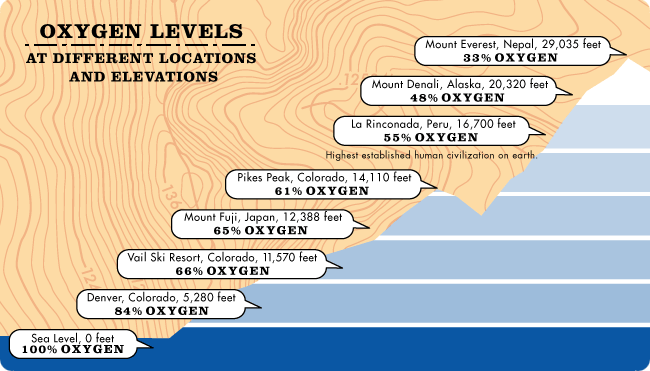
The best treatment for altitude sickness is to go to a lower altitude. But if you have mild symptoms, you may be able to stay at that altitude and let your body get used to it. Symptoms often occur if you have just arrived at a mountain resort from a lower altitude.
You may also be able to use oxygen or a specially designed pressure chamber to treat altitude sickness.
If you stay at a high altitude, rest. You can explore the area, but take it easy. Limit any walking or activity. Drink plenty of water, but do not drink alcohol. Do not go to a higher altitude until your symptoms go away. This may take from 12 hours to 3 or 4 days.
For the headache, you can take an over-the-counter medicine, such as ibuprofen(Advil, Motrin) or naproxen (Aleve). Do not give aspirin to anyone younger than 20. Aspirin has been linked to Reye syndrome, a serious illness. You may also use medicine to reduce feeling sick to your stomach or other symptoms.
A doctor can give you acetazolamide (Diamox). This speeds up how fast your body gets used to the higher altitude. Nifedipine (Procardia) and dexamethasone are also used for altitude sickness. You may also be able to use oxygen or a specially designed pressure chamber to treat altitude sickness.
Go to a lower altitude if your symptoms are moderate to severe, they get worse, or medicine or oxygen treatment does not help. Go down at least 1500 ft (457 m). Go to a lower altitude as fast as you can or get emergency help if someone with you has severe symptoms such as being confused or not being able to walk straight. Go with the person. Never let someone with severe altitude sickness go down alone.
Can you prevent altitude sickness?
You may be able to prevent altitude sickness by taking your time when you go to high altitudes, using medicine in advance, and eating certain foods.
- If you are going to altitudes higher than 8000 ft (2438 m), try to spend a night at a medium altitude before going higher. For example, in the United States, spend a night in Denver before going to the Rocky Mountains.
- Do not fly into high-altitude cities. If this is not possible, avoid large meals, alcohol, and being very active after you arrive. Rest, and drink plenty of liquids. If you have symptoms, do not go higher until they have gone away. Examples of high-altitude cities include Cuzco, Peru; La Paz, Bolivia; and Lhasa, Tibet.
- Sleep at an altitude that is lower than the altitude you were at during the day. For example, if you ski at 9500 ft (2896 m) during the day, sleep the night before and the night after at 8000 ft (2438 m). "Climb high, sleep low" is standard practice for those who spend time at high altitudes.
- One study showed that starting to take ibuprofen 6 hours before climbing to high elevations and then taking it every 6 hours while climbing may help prevent altitude sickness.1 Ibuprofen may also reduce the symptoms of altitude sickness if you do get it.
- You may consider taking acetazolamide (Diamox) or possibly dexamethasone before going to a high altitude.2 Talk to your doctor about this.
- Eat a lot of carbohydrates. This includes breads, cereals, grains, and pasta.
What if you have a lung problem or other disease?
Experts do not know much about how altitude affects other diseases. Many people with allergic asthma do better at high altitudes. Still, if you have asthma and are going to high altitudes, continue to use your daily controller medicine and take your quick-relief medicine with you. Talk with your doctor about altitude sickness if you have long-term diseases, especially heart problems, sickle cell anemia, chronic obstructive pulmonary disease (COPD), or sleep apnea.
Labels:
altitude sickness,
prakasam,
SackidMD
Friday, July 4, 2014
Thursday, July 3, 2014
AAP: Read to kids from birth - Happy JULY 4th
In its first policy statement on literacy promotion, the American Academy of Pediatrics (AAP) advises pediatricians to encourage parents to read to their children beginning in infancy and continuing until at least entry into kindergarten.
The recommendations call for pediatricians to promote literacy at health supervision visits throughout infancy and early childhood until at least children start school by explaining to parents the benefits of reading aloud with their children and advising them about enjoyable, developmentally appropriate reading activities.
All high-risk, low-income children should receive developmentally, culturally, and linguistically appropriate books at health supervision visits. Pediatric providers will need to find ways to distribute such books without placing financial strain on their practices, such as supporting state or federal funding, the statement acknowledges.
To support literacy education, the AAP recommends strategies such as wall posters; distributing materials that are understandable to parents with limited literacy skills; providing information about local library locations and services; promoting the “5 Rs” of early education (reading, rhyming, routines, rewards, relationships); and partnering with child advocates to promote national literacy policies. Pediatric resident training should include literacy promotion, and more research should be done on best practices.
The policy statement originated in growing realization of the significance of brain development in the first 3 years of life and the benefits of reading with young children, which include stimulating brain development and strengthening parent-child relationships at a pivotal time.
Early reading experiences foster long-lasting language, literacy, and social-emotional skills, which many children sorely lack. More than a third of American children enter kindergarten without the language skills they need to learn to read.
Labels:
kid education,
prakasam,
SackidMD
Wednesday, June 11, 2014
Excellent patient care handouts for diabetes - English and Spanish. Has multiple small handouts.
Excellent patient care handouts for diabetes - English and Spanish. Has multiple small handouts.
Please print as you need
Please print as you need
Tuesday, June 3, 2014
Sun Safety - Sun Safety from CDC website
Sun Safety

The sun’s ultraviolet (UV) rays can damage your skin in as little as 15 minutes. Follow these recommendations to help protect yourself and your family.
Shade
You can reduce your risk of skin damage and skin cancer by seeking shade under an umbrella, tree, or other shelter before you need relief from the sun. Your best bet to protect your skin is to use sunscreen or wear protective clothing when you're outside—even when you're in the shade.
Clothing
Loose-fitting long-sleeved shirts and long pants made from tightly woven fabric offer the best protection from the sun's UV rays. A wet T-shirt offers much less UV protection than a dry one. Darker colors may offer more protection than lighter colors. Some clothing certified under international standards comes with information on its Ultraviolet Protection Factor (UPF), which tells you how much protection you can expect to get from that article of clothing.
If wearing this type of clothing isn't practical, at least try to wear a T-shirt or a beach cover-up. Keep in mind that a typical T-shirt has an SPF rating lower than 15, so use other types of protection as well.
Hat
For the most protection, wear a hat with a brim all the way around that shades your face, ears, and the back of your neck. A tightly woven fabric, such as canvas, works best to protect your skin from UV rays. Avoid straw hats with holes that let sunlight through. A darker hat may offer more UV protection.
If you wear a baseball cap, you should also protect your ears and the back of your neck by wearing clothing that covers those areas, using sunscreen with at least SPF 15, or by staying in the shade.
Sunglasses
Sunglasses protect your eyes from UV rays and reduce the risk of cataracts. They also protect the tender skin around your eyes from sun exposure.
Sunglasses that block both UVA and UVB rays offer the best protection. Most sunglasses sold in the United States, regardless of cost, meet this standard. Wrap-around sunglasses work best because they block UV rays from sneaking in from the side.

Sunscreen
Put on sunscreen before you go outside, even on slightly cloudy or cool days. Don't forget to put a thick layer on all parts of exposed skin. Get help for hard-to-reach places like your back. And remember, sunscreen works best when combined with other options to prevent UV damage.
How sunscreen works. Most sun protection products work by absorbing, reflecting, or scattering sunlight. They contain chemicals that interact with the skin to protect it from UV rays. All products do not have the same ingredients; if your skin reacts badly to one product, try another one or call a doctor.
SPF. Sunscreens are assigned a sun protection factor (SPF) number that rates their effectiveness in blocking UV rays. Higher numbers indicate more protection. You should use a sunscreen with at least SPF 15.
Reapplication. Sunscreen wears off. Put it on again if you stay out in the sun for more than two hours and after swimming, sweating, or toweling off.
Expiration date. Check the sunscreen's expiration date. Sunscreen without an expiration date has a shelf life of no more than three years, but its shelf life is shorter if it has been exposed to high temperatures.
Cosmetics. Some makeup and lip balms contain some of the same chemicals used in sunscreens. If they do not have at least SPF 15, don't use them by themselves.
Excellent HANDOUT - http://www2.epa.gov/sites/production/files/documents/sunscreen.pdf
Wednesday, May 28, 2014
Know your resources - Agency for Toxic Substances and Disease Registry
Agency for Toxic Substances and Disease Registry (ATSDR), based in Atlanta, Georgia, is a federal public health agency of the U.S. Department of Health and Human Services. ATSDR serves the public by using the best science, taking responsive public health actions, and providing trusted health information to prevent harmful exposures and diseases related to toxic substances.
http://www.atsdr.cdc.gov/
http://www.atsdr.cdc.gov/
Most Viewed Toxic Substances
Tuesday, May 13, 2014
Effects of Alcohol on Diabetes - SAY NO to alcohol
Effects of Alcohol on Diabetes - SAY NO to alcohol - Please read and explain to your children
Friday, May 9, 2014
The real wasabi - source wikipedia

Wasabi is generally sold either as a root which is very finely grated before use, as dried powder in large quantities, or as a ready-to-use paste in tubes similar to travel toothpaste tubes.[4] In some high-end restaurants, the paste is prepared when the customer orders, and is made using a grater to grate the root; once the paste is prepared, it loses flavour in 15 minutes if left uncovered.[5] In sushi preparation, sushi chefs usually put the wasabi between the fish and the rice because covering wasabi until served preserves its flavor.
Fresh wasabi leaves can be eaten, having the spicy flavor of wasabi roots.
Because the burning sensations of wasabi are not oil-based, they are short-lived compared to the effects of chili peppers, and are washed away with more food or liquid. The sensation is felt primarily in the nasal passage and can be quite painful depending on the amount consumed.
Legumes (peanuts, soybeans, or peas) may be roasted or fried, then coated with wasabi powder mixed with sugar, salt, or oil and eaten as a crunchy snack. Inhaling or sniffing wasabi vapor has an effect like smelling salts, a property exploited by researchers attempting to create a smoke alarm for the deaf. One deaf subject participating in a test of the prototype awoke within 10 seconds of wasabi vapor sprayed into his sleeping chamber.[6] The 2011 Ig Nobel Prize in Chemistry was awarded to the researchers for determining the ideal density of airborne wasabi to wake people in event of an emergency.
Thursday, May 8, 2014
Wasabi: The fake and the real!
t's an ubiquitous ingredient found in just about every Sushi restaurant in the country: wasabi. But cover your eyes—most of it, is not real wasabi!
We will see what is true Wasabi in the next post!
Friday, May 2, 2014
How Long Can a Vial of Insulin Be Used After It Is Started: Where Are We 10 Years Later?
An excellent article from Martin M. Grajower, MD, FACP, FACE
Endocr Pract. 2014;20(2):188-190.
How Long Can a Vial of Insulin Be Used After It Is Started: Where Are We 10 Years Later?
OFFICIAL FDA NOTE:
http://www.fda.gov/Drugs/EmergencyPreparedness/ucm085213.htm
Tuesday, April 22, 2014
Monday, April 14, 2014
Dual inhibitor of sodium glucose transporters 1 and 2 (SGLT1 and SGLT2) - for type 1 DM
Wednesday, April 2, 2014
Sunday, March 30, 2014
Mannkind's inhaled insulin

In advance of Tuesday’s hearing on MannKind's inhaled insulin, the US Food and Drug Adminstration (FDA) has outlined several safety and efficacy issues of potential concern that it will ask its Endocrinologic and Metabolic Drugs Advisory Committee to address, leading up to a vote on approval.
The product, Technosphere inhaled insulin system (Afrezza), consists of a premeal insulin powder loaded into a cartridge for oral inhalation. The company is seeking an indication as an ultrarapid-acting insulin for adults with type 1 or 2 diabetes. In type 1 patients, the indication would be for use with injected basal insulin.
Briefing documents from both MannKind Corporation and the FDA were posted Friday on the FDA website.
According to MannKind, the inhaled insulin, which is composed of recombinant human insulin and an inert excipient, has a more rapid onset and shorter duration of action than current injectable insulins and therefore "more closely mimics mealtime endogenous insulin secretion."
However, the FDA has declined to approve 2 previous versions of the product that used different inhalers (in 2010 and 2011).
The current review will primarily focus on 2 new pivotal phase 3 trials with a new inhaler (Gen2) intended for marketing, but the FDA will ask the committee to consider some of the previous data with the 2 older inhalers (MedTone C and D).
Another inhaled insulin, Exubera, was approved by the FDA in 2006 but voluntarily withdrawn from market in 2007 by its manufacturer, Pfizer, because of poor sales.
"Level of Concern" to Be Elicited
Efficacy issues that the FDA is expected to ask the panel to address include the lower bioavailability of Afrezza compared with injected insulin and the finding of some studies that increasing doses of Afrezza did not increase its glucose-lowering effect.
In the pivotal randomized trial 175, involving 353 patients with type 2 diabetes inadequately controlled on one or more oral agents, Afrezza was superior to placebo in lowering HbA1c at 24 weeks.
However, in pivotal study 171, of 344 patients with type 1 diabetes, Afrezza had significantly inferior HbA1c reduction compared with premeal injections of insulin aspart, although the difference remained within the prespecified noninferiority margin.
The FDA will also ask panel members to express their "level of concern" about effects on the lung in patients with various lung conditions and smokers, as well as about "noted imbalances not favoring Afrezza" in lung cancer and diabetic ketoacidosis in patients with type 1 diabetes, although the numbers were small.
The panel will be asked to vote separately on approval for patients with type 1 and 2 diabetes. The FDA is expected to complete its review of the new drug application by April 15, according to MannKind.
Subscribe to:
Posts (Atom)






